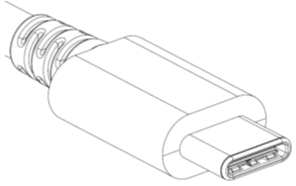What is Type-C?
Type-C refers to the interface definition, and USB 3.x refers to the protocol. The two are completely different concepts.
Type-C female header definition:

Type-C male header definition:

Four major advantages of Type-C
1. Smaller size: Similar in size to existing USB 2.0 Mirco-B.
2. Power charging: Type-C will support higher power charging capabilities.
3. Scalability: Type-C design will support future USB performance.
4. Usability: It supports insertion from both front and back sides. Users no longer need to distinguish between the front and back sides, making it easier to insert the interface.
The final version of Type C measures approximately 8.4mm x 2.6mm, which is slightly larger than USB 2.0 Micro-B. Its charging capability itself supports up to 15W, and it also supports USB Power Delivery regulations.
Will support power supply capability up to 100W

Type-C testing has the following main requirements:
1. Institutional testing:
Type-C is mainly used in handheld devices, so like USB Micro-B, it has a high lifespan of 10,000 plug-and-unplug operations.
The insertion force and extraction force are also different from other original USB types. The insertion and extraction force of Type-C is 5~20N, and the extraction force is 8~20N.
At the same time, cable bending tests and cable pull-out tests must be performed. Like Micro-B, Type-C must also undergo 4-axis testing.
2. Electrical test:
There are also changes in the low-order rated resistance (LLCR) test. The initial value has changed from the original 30mΩ to 40mΩ, In addition, Type-C must undergo a current temperature rise test, and a current of 5A is given to the Vbus terminal, And when a current of 1.25A is given to the Vconn terminal, the temperature change cannot exceed 30ºC.
3. Environmental testing:
The requirements are the same as USB 3.0, and environmental testing is conducted in accordance with the EIA 364-1000.01 specification.
4. Electroplating requirements:
Same requirements as USB 3.0.
5. High frequency test:
The biggest difference between Type-C specifications and previous USB specifications is that Type-C also defines a series of high-frequency test requirements for board-side connectors.